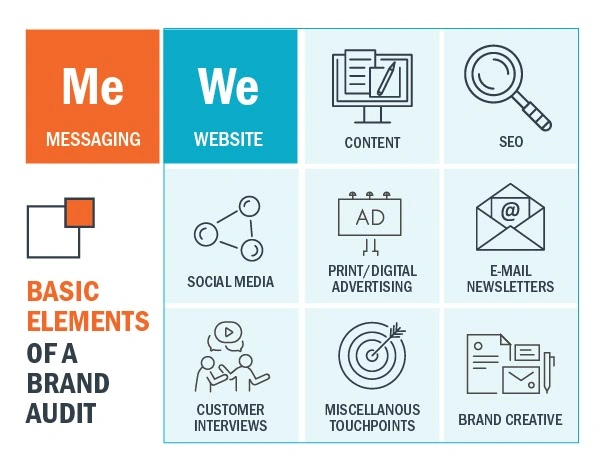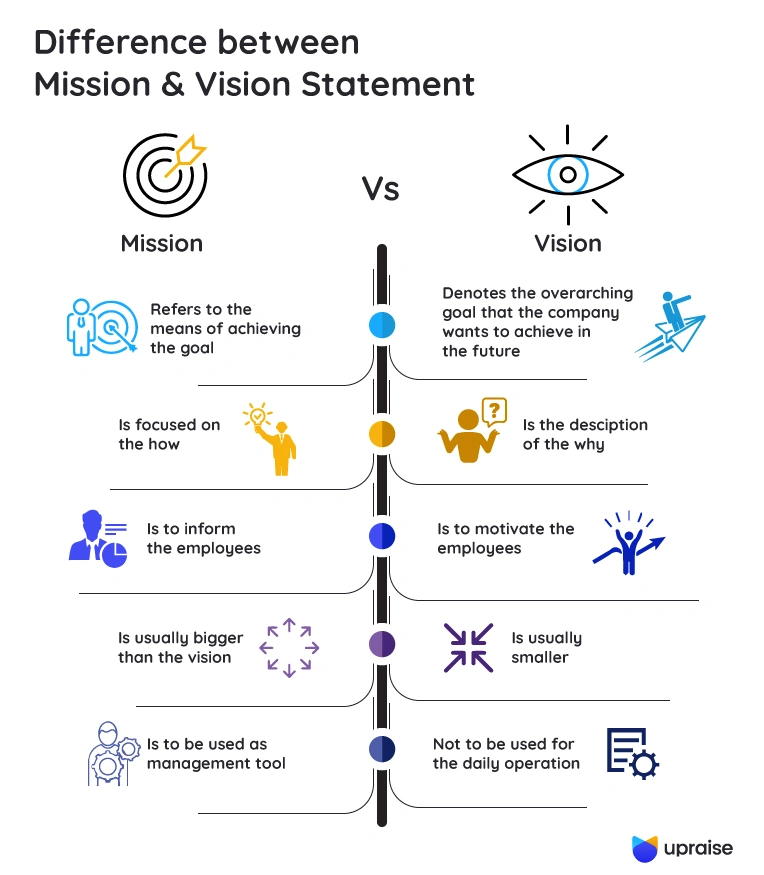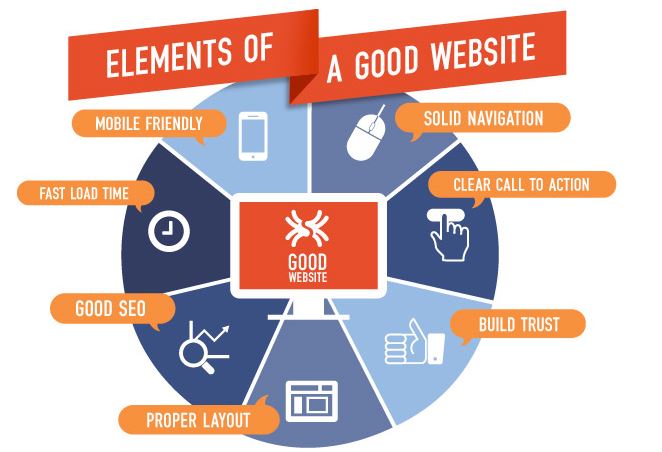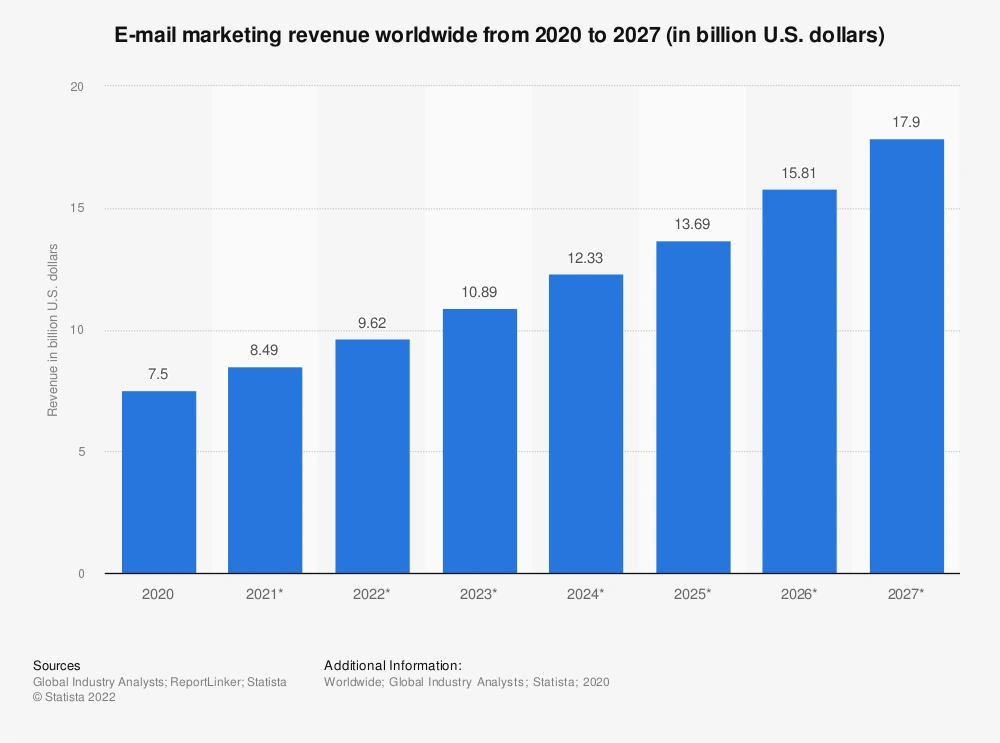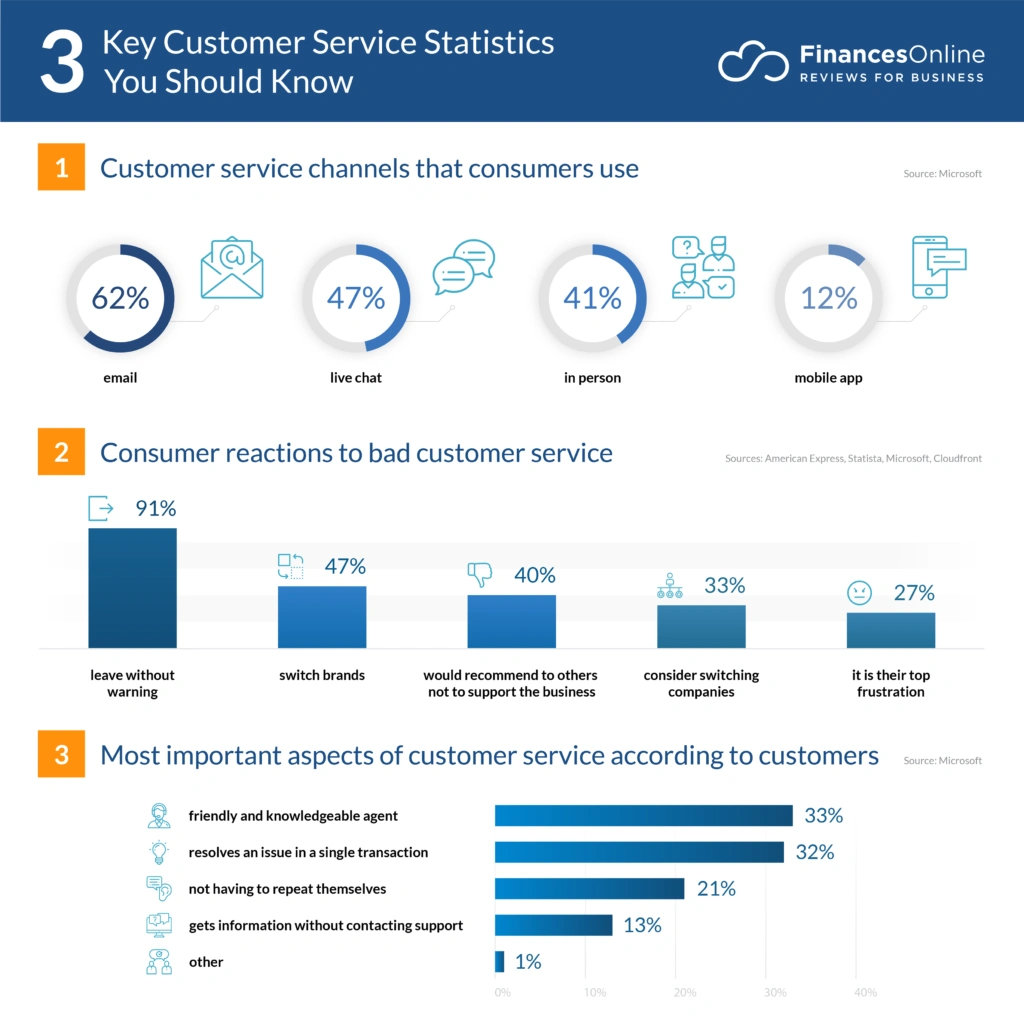- Blog Home
- Industries
- Emily Chang
- What Is A Brand Audit, Why It's Important, And How To Perform One
What is A Brand Audit, Why It's Important, and How to Perform One
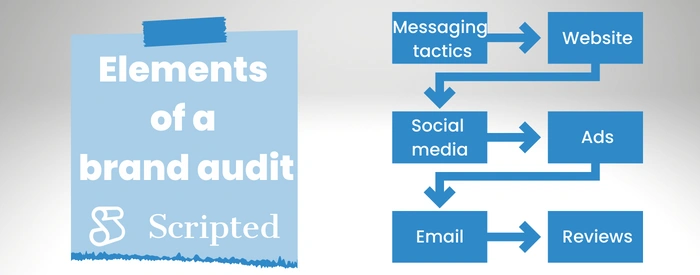
Your brand tells your customers everything they need to know about what you can offer them. So, there is no question on whether you need to establish your brand. With how cutthroat the competition is out there, it's A MUST to stand out.
The good news is there is a way to ensure that your brand is performing at its best—brand audit. Whatever purpose you may need it for, the end goal is ensuring your business succeeds. Here at Scripted, we'll walk you through how to perform a brand audit and why you need one. But first, let's cover the basics.
What is the purpose of a brand audit?
There are two primary purposes for conducting a brand audit. First, you want to assess your brand's weaknesses and its strengths. Second, you want to ensure that you're effectively positioned in your industry and market. On top of that, you can also leverage it to level up your brand's strengths.
If you're wondering how to perform a brand audit, then it's not something you can do in one sitting. You need to conduct this as systematically as possible. You can't position your brand effectively if you don't know your strengths and weaknesses, so that's exactly where you should start.
Your brand is not a linear thing where you can quickly analyze its aspects immediately. With several interconnected, simultaneously moving components, you can't precisely pinpoint what you're looking for right away. When you examine your brand, you must identify which aspects you need to strategize into specific actions.
What are the elements of a brand audit?
To find the answer to your question about "how to perform a brand audit," we need to break the entire process into segments. In this case, elements. By examining each aspect, you'll be able to measure how well (or poorly) these different elements are working as a whole.
Here are the essential brand elements you must analyze for your brand audit. Remember, it's crucial to document your findings per element so your team has an idea about your brand's components.
Your messaging tactics
Let's start with your brand messaging. All the other elements are interconnected to this, so it's a solid foundation to anchor your audit. Take note of these aspects of your brand messaging:
Your vision statement summarizes your brand's long-term aspirations for your clients.
Your mission statement tells your clients a summary of your brand's purpose and main.
Your reason to believe relays to your clients what your core values are. It helps your clients understand your brand's goals and purpose in one statement.
Lastly, using short sentences or adjectives, your brand attributes describe your brand's essential guiding elements.
If you've never come up with these messaging elements before, then it's time to start brainstorming. If you've already established these items right from the start, ask your team to review them. Try to ask yourselves if the messages you've set before are still valid today.
Remember, your branding message should be your guiding principle across every element of the brand audit.
Your website
Once you have a good grasp of your brand messaging, it's time to assess your website. Try to look at your website and ask yourself these questions: Is my brand message consistent across the website? Will my audience understand what my brand wants to communicate? Is your messaging consistent?
From your website, proceed to your site map. Try to assess if your audience can make sense of everything you've included in it. Does your website cover all the topics you want to include in your brand? Are all your pages accessible, and does it provide ease of navigation?
One way to evaluate your website is to ask someone who's not too familiar with your website to visit it. Ask them to navigate the site and go to specific pages. If they get confused or lost, that's one item you need to note in your brand audit.
On top of assessing your website paths, you must also consider your content and search engine optimization (SEO). For your content, try to evaluate if your brand has a content strategy. Are you following it, and does the traffic lead to conversions? If you don't have a content strategy, you need to note it as another touch point in your audit.
For your SEO, you must analyze the technical aspects of your websites. Are all your pages optimized? Are you using relevant keywords to update your page titles and H1s? What about your alt texts? Are you using keywords for them as well?
When performing an SEO brand audit, you can take advantage of software solutions that can check your website as a whole. These tools, such as SEMRush, can help you review your website for backlinks. The more backlinks you have from high-quality domains, the better it will be for your brand.
Your social media channels
Once you've finished your website audit, it's time to move on to your social media elements. Here are some of the questions and items you must consider to perform a social media audit:
- How many followers does each of your social media channels have?
- Do you have a reasonable engagement rate across each channel?
- Is your brand messaging consistent across your handles, bios, username, and locations? Is it consistent across all channels?
- Are you communicating your brand message in all your posts?
- Do you have specific campaigns per channel, or are you posting generic, repetitive posts?
To perform an efficient social media audit, you must work closely with your social media manager.
Digital and traditional advertising
From your social media channels, let's move on to the next element: advertising. You'll need to audit ALL your advertisements within a one-year period. This includes both your print and digital ads. Once you've collated everything, ask your team the following questions:
- Are the ads eye-catching, or do they grab your attention?
- Is your brand messaging communicated consistently across your ads?
- Are there specific actions that correspond to your ads?
- How much did they cost as a whole? How much did each ad cost?
- Did your ads perform well?
In this case, you'll need to assess your ads individually and as a whole. You must note what you liked most and least for each ad. From there, you must also consider the impression and tone of your ads as a whole. Taking advantage of your marketing analytics and data-driven strategies makes it easier to increase your ROI by 5-8x.
Emails and newsletters
For your email audit, you must collect two things: all your emails and all your newsletter reports. If possible, try to print all the emails you sent from last year, so it's easier to review them. Ask your team the following questions:
- Is your brand messaging strategy consistent in all your email communications?
- Does the overall look and impression reflect your brand?
- Are all your emails relevant, polished, and well-designed?
- How frequently did you send those emails?
- Did you personalize your emails?
- Did your emails have specific purposes?
Email is one of the most effective forms of communication with your audience. In fact, testing your emails can also increase your ROI. It's very personal, so you must do it right. You do not want to end up spamming your potential clients, which could be one of your brand weaknesses.
Customer interviews
To answer the question "how to perform a brand audit," you must tap into one of the most vital measures of brand success—your audience. If possible, try to interview a few of your most loyal customers and some of your potential clients. Ask them questions about your brand, specifically in aspects where they can identify concerns. Here are some questions you may ask so you can locate your brand's strengths and weaknesses:
- How frequently do you buy from (your brand)?
- Would you recommend (your brand) to a friend?
- What's the best thing about (your brand)?
- What's your least favorite aspect about (your brand)?
- Why did you choose (your brand)?
- What area/s of (your brand) do you think need/s improvement?
Remember, 47% of customers believe you should act on their feedback. So, it's vital to take note of all the essential insights you can get from their responses.
When do you need a brand audit?
Brand audits can help you determine what is working with your branding strategy. On top of that, you can quickly identify which aspects of your brand need improvement and which strengths you can leverage. Here are some of the specific scenarios that should hint at when you should specifically conduct a brand audit:
- If you want to assess your brand's strengths and weaknesses
- If you want to identify how your target audience perceives your brand
- If you want to position your brand as an authority in your industry
- If you want to improve your strategies to target your specific audience
The best way to ensure your brand is hitting its goals and key performance indicators (KPIs) is to schedule a regular brand audit. This way, you'll better grasp all your essential brand success metrics, which will generally depend on your leads, sales, and conversions.
Steps to perform a brand audit
Now that we've discussed all the elements you need on "how to perform a brand audit," it's time to delve deeper and discuss the specific steps. You must allot enough time and resources to make the most of a brand audit. Remember that you will not get the solid results you expect if you do it only halfheartedly.
Step 1: Establish your purpose
Before performing a brand audit, let's first define your business purpose. This will help you allocate the right resources to this process, as well as set the right tone in your team. Do you want to uncover your brand's weaknesses or determine whether your brand is communicating the right message? Will you want to explore the brand's personality, or you're trying to find out if the brand is performing as expected? You must set these up front so your team can make an informed decision on how to proceed.
Step 2: Define your end goal
Once you have determined the purpose of your brand audit, the next step is to define your end goal. Your goals should be as SMART as possible. This will give your team the direction it needs to move forward. Your goals will help you identify which elements are not performing well in your brand.
Step 3: Create a specific plan for your goals
Once you have defined your end goal for your brand audit and laid out your goals, create a plan of action. This will be the meat of your assessment. For each specific step in your plan, you can use it as an indicator of your team's progress. For example, you may want to track several metrics that correlate to your primary goals. You can also use this to pinpoint where goals may be lacking. For example, you may have created good branding to target your ideal buyers, but your current customers don't precisely align with your target market.
Step 4: Collect, organize, and review data
The data you gather will be critical to the success of your brand audit and the development of your goals. This step involves creating a spreadsheet for each goal to collect and organize the data you've gathered so far. This allows you to compile and segment the data from each point, allowing you to move quickly through it.
Step 5: Analyze results and come up with solutions
One of the best ways to analyze your data during a brand audit is to use data as a tool for visualization. By visualizing your data, your team can better understand what the numbers tell you since it's presented in a more comprehensive format. This will help you see your brand's trends and what needs to be changed.
Step 6: Implement your solutions and monitor
The most important thing your team can do is to implement the solutions that you identified in your brand audit. Having a plan laid out for your brand will ensure that you're achieving all your KPIs as you go. By monitoring your data, you'll see if you're making the right decisions and if you need to change your strategies.
The most crucial aspect of a brand audit for your clients
Your brand encompasses several interconnected elements that all work together to form your brand as a whole. You may think your branding message could be considered the most crucial aspect, but that's not necessarily the case.
Generally, this will mainly depend on the brand and your purpose for the brand audit. So, to determine which aspects you should focus on, you'll need to examine the performance of your business. From there, you must try and pinpoint your strengths and weaknesses.
Whatever insights you may gain from these analyses, you must use this data to identify what your biggest gap is—which is something that you must consistently monitor.
Other than that, you must listen closely to your client's feedback. This should tell you if you are efficiently communicating your brand's message to them and whether you are indeed meeting your business goals and KPIs.
Partner with a Scripted writer for all your branding needs
As you can see, conducting a brand audit can help both your brand and clients. It's one crucial process you must master to ensure that you're hitting your KPIs and providing everything your clients need. If you're still wondering if your brand is performing well, then YES, a brand audit can help you answer that burning question.
If you're aiming to increase your brand visibility and hit several stones all at once, Scripted can help. You'll partner with experts who can craft unique and engaging content assets for your branding message, SEO content, emails and newsletters, and advertisements. Connect with a top-notch writer for all your branding needs today!
